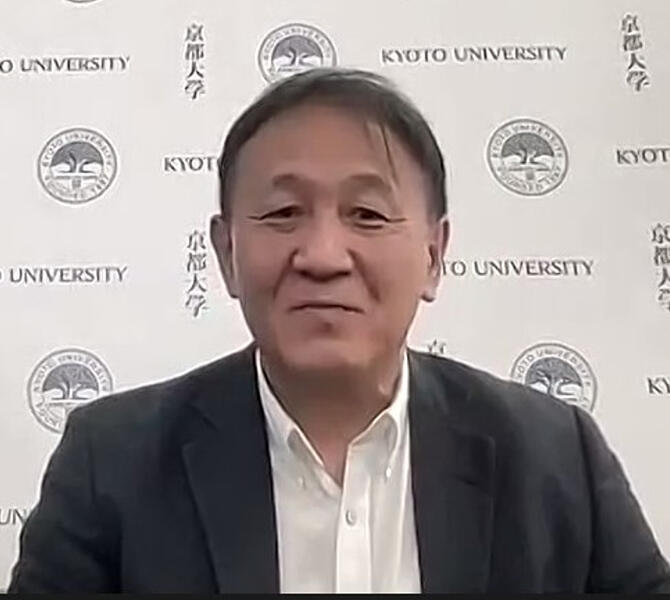A research team led by Professors Seishi Ogawa and Masakazu Toi, and Program-Specific Associate Professor Tomomi Nishimura of the Graduate School of Medicine at Kyoto University, and Program-specific Associate Professor Nobuyuki Kakiuchi of the Hakubi Center for Advanced Research at Kyoto University has uncovered, for the first time, the entire course of breast cancer, the incidence of which has been increasing in recent years, from the acquisition of the first alterations around puberty up to onset decades later. Many breast cancer patients acquired driver mutations during puberty. Some patients developed mutations at 5 years of age and developed breast cancer in their 40s. Ogawa stated, "Women over 40 years of age possess many driver mutations. In the future, the disease may be prevented using inhibitors tailored to these mutations." The research was published in Nature.

Breast cancer is the most common cancer in Japanese women, and its incidence has increased by approximately six-fold over the past 30 years. Compared to other cancers, breast cancer often develops at a younger age, in the 40s and 50s. This early development purportedly occurs because approximately 70% of cases are estrogen-sensitive, and women-specific life events that result in an increase or decrease in estrogen levels—such as menarche, pregnancy, childbirth, breastfeeding, and menopause—affect the risk of developing breast cancer. Random genetic alterations also occur in our body cells.
Even in seemingly normal cells, so-called oncogene (driver) mutations may occur. These mutations alone do not necessarily cause cancer as the accumulation of multiple driver mutations may be required. While various studies have identified major driver mutations, the overall picture of the process of cancer development—when the first driver mutation occurs, how the mutation is repeated, and how it eventually leads to cancer—is not well understood.
Ogawa also stated, "We focused on breast cancer because of a chance discovery. We began this research when Dr. Nishimura identified the same mutations in cells that did not appear to be cancerous while analyzing mammary cells." To understand how genetic alterations accumulate in normal mammary cells with the aging process, the research group collected and cultured mammary cells from the mammary tissues of breast cancer patients of various ages and from the milk of lactating women. The researchers examined the genetic alterations accumulating in single cells by next-generation sequencing and phylogenetic analyses.
Specifically, samples of breast cancer lesions, proliferative lesions, and normal mammary epithelia were collected from the excised tissues of five premenopausal estrogen-sensitive breast cancer patients in whom multiple proliferating lesions surrounded the cancer cells. Whole-genome analysis was then performed. Phylogenetic analysis, which is used in evolutionary studies, was used to identify the common ancestor of cancerous and non-cancerous epithelia and determined the type and order of driver mutations that had preceded the cancer development.
In one case, a 1:16 gene (der) translocation, one of the cell driver mutations, had occurred at 5.8 years of age. Since that time, the gene mutation repeated, resulting in the formation of some cancer cells and some proliferative lesions. The same case showed a der translocation in another cancer cell, which had occurred at 10 years of age, which branched into normal and cancerous cells. The detection of der-positive cells in the surgical specimens revealed that the mutation had also spread to non-cancerous regions. Another patient had acquired a der translocation at 17 years of age, and these mutations extended to 3.5 centimeters (cm) and 6 cm. Among the five breast cancer patients, four had acquired der translocations at an estimated mean age of 10.6 years (range 5.8−16.9 years). Several decades elapsed from the acquisition of the translocation to the onset of breast cancer.
Conversely, an examination of the lesions of postmenopausal patients with breast cancer who had acquired the der translocation suggested that non-cancer clones might have disappeared with menopause because these clones had not been expanded at the time of cancer onset. Moreover, in a patient without der translocation, non-cancer clones, from which the cancer had originated, had acquired a driver mutation, AKT1, at 4 years of age.
The non-cancer clone region with AKT1 mutation expanded to 6.5 cm and multiple carcinogenesis events were observed among the clones. Analyzing 21 patients revealed the accumulation of genetic alterations in mammary cells with aging, with 19.5 mutations accumulating per year before menopause, and decreasing to 8.1 mutations per year after menopause.
Furthermore, the number of gene mutations decreased in women who had experienced childbearing and increased to 210.4 per year when a driver mutation occurred. The reduced rate of mutation accumulation after menopause correlated with a considerable postmenopausal decrease in estrogen, suggesting that estrogen is involved in the accumulation of gene mutations. However, the decrease in the number of mutations (54.8 mutations) in women who had given birth, despite the increase in estrogen during pregnancy, might have been due to cell death in the mammary epithelium after lactation, leading to reconstruction of the mammary gland by previously dormant stem cells.
Ogawa stated, "Here, we have clarified why a decline in the birth rate correlates with an increased incidence of breast cancer. The der translocation is a mutation found in about 20% of all breast cancers, but a certain number of women who acquire der translocation during puberty do not develop the disease because the clone region disappears at menopause. Clarifying the factors that determine the difference between clones that progress to cancer and clones that disappear may lead to the prediction of cancer risk, effective screening, and the development of measures for cancer prevention. By applying this technique to other types of breast cancers, we hope to clarify their underlying carcinogenic mechanisms."
Journal Information
Publication: Nature
Title: Evolutionary histories of breast cancer and related clones
DOI: 10.1038/s41586-023-06333-9
This article has been translated by JST with permission from The Science News Ltd. (https://sci-news.co.jp/). Unauthorized reproduction of the article and photographs is prohibited.




